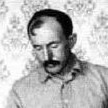
1861 - 1903
Thomas Horn Jr.
Summary
Name:
Nickname:
Tom Hale / Tom HicksYears Active:
1876 - 1903Birth:
November 21, 1861Status:
ExecutedClass:
MurdererVictims:
1Method:
ShootingDeath:
November 20, 1903Nationality:
USA
1861 - 1903
Thomas Horn Jr.
Summary: Murderer
Name:
Thomas Horn Jr.Nickname:
Tom Hale / Tom HicksStatus:
ExecutedVictims:
1Method:
ShootingNationality:
USABirth:
November 21, 1861Death:
November 20, 1903Years Active:
1876 - 1903Date Convicted:
October 24, 1902bio
Born on November 21, 1861, in rural Scotland County, Missouri, Tom Horn came from a large family—he was the fifth of 12 kids. His childhood was rough: abused by his father and deeply lonely, with only his dog, Shedrick, for company—tragedy struck when bullies killed Shedrick during a scuffle.
By age 16, Horn had fled west and enlisted as a civilian scout during the Apache Wars. Under Al Sieber, he earned a reputation for bravery—such as during a deadly ambush at Cibecue Creek and in the Battle of Big Dry Wash. By 1885, he was chief of scouts at Fort Bowie and even witnessed Geronimo's surrender in 1886, acting as interpreter for Lt. Charles Gatewood
Post-war, Horn farmed briefly in Arizona until rustlers decimated his herd. That loss birthed his disdain for theft and drew him into work as a range detective. He traversed the West as a hired gun—brutal but efficient. Horn reportedly said he'd rather seize a calf than trust the courts. His presence alone cowed many; locals claimed rustling ended once Horn rode into town.
He tangled in notorious feuds like the Pleasant Valley War, sometimes serving as a deputy sheriff. His uncanny tracking earned him work with the Pinkerton Agency by the late 1880s. Horn operated undercover under aliases “Tom Hale” or “Tom Hicks".
murder story
In July 1901, Wyoming's Iron Mountain became Horn’s final stage. A bitter feud had erupted between the Miller cattle family and the Nickell sheep ranchers. Horn, employed by cattle interests, visited the Miller ranch and became acquainted with the young schoolteacher, Glendolene Kimmell, and teenage Victor Miller. Just days later, on July 18, 1901, the body of 14-year-old Willie Nickell was found near his family’s gate—shot dead. A coroner’s inquest unfolded through summer, with more violence—Kels Nickell, Willie’s father, was shot on August 4, and hundreds of his sheep were brutally slaughtered. Witnesses glimpsed two horsemen departing the scene, their horses matching Miller stock.
In January 1902, Deputy U.S. Marshal Joe LeFors, determined to expose the killer, tricked Horn with a fictitious job offer. Under the influence, Horn bragged that he’d shot Willie from 300 yards away with his rifle—calling it the "best shot" and "dirtiest trick" he'd made. That recorded confession became damning. Horn was arrested the next day, setting the gears of justice in motion.
Supported by cattleman John C. Coble, Horn’s defense assembled a high‑powered legal team—but the prosecution capitalized on Horn’s boast, undermining his alibi. Witnesses cited proximity; others pointed out inconsistencies. Kimmell offered a sworn statement that Victor Miller may have been the true culprit—yet the governor declined to intervene. Despite the complexity, a jury convicted Horn on October 24, 1902.
While incarcerated, Horn penned his autobiography. Appeals failed. Then, just one day shy of his 42nd birthday, on November 20, 1903, Horn was executed using the water-powered “Julian” gallows in Cheyenne. His old comrade John C. Coble paid for his burial; Horn was laid to rest in Boulder, Colorado’s Columbia Cemetery.